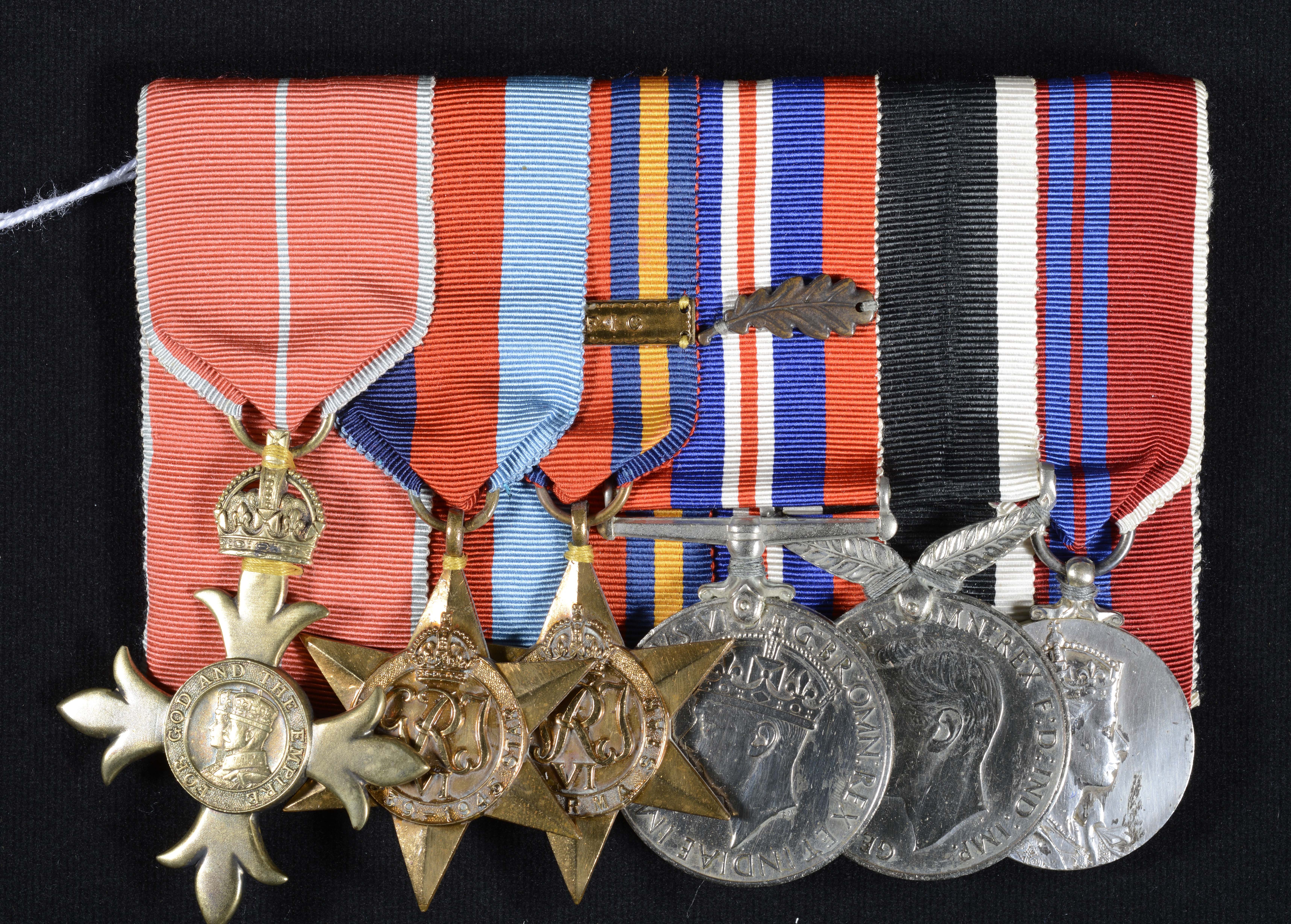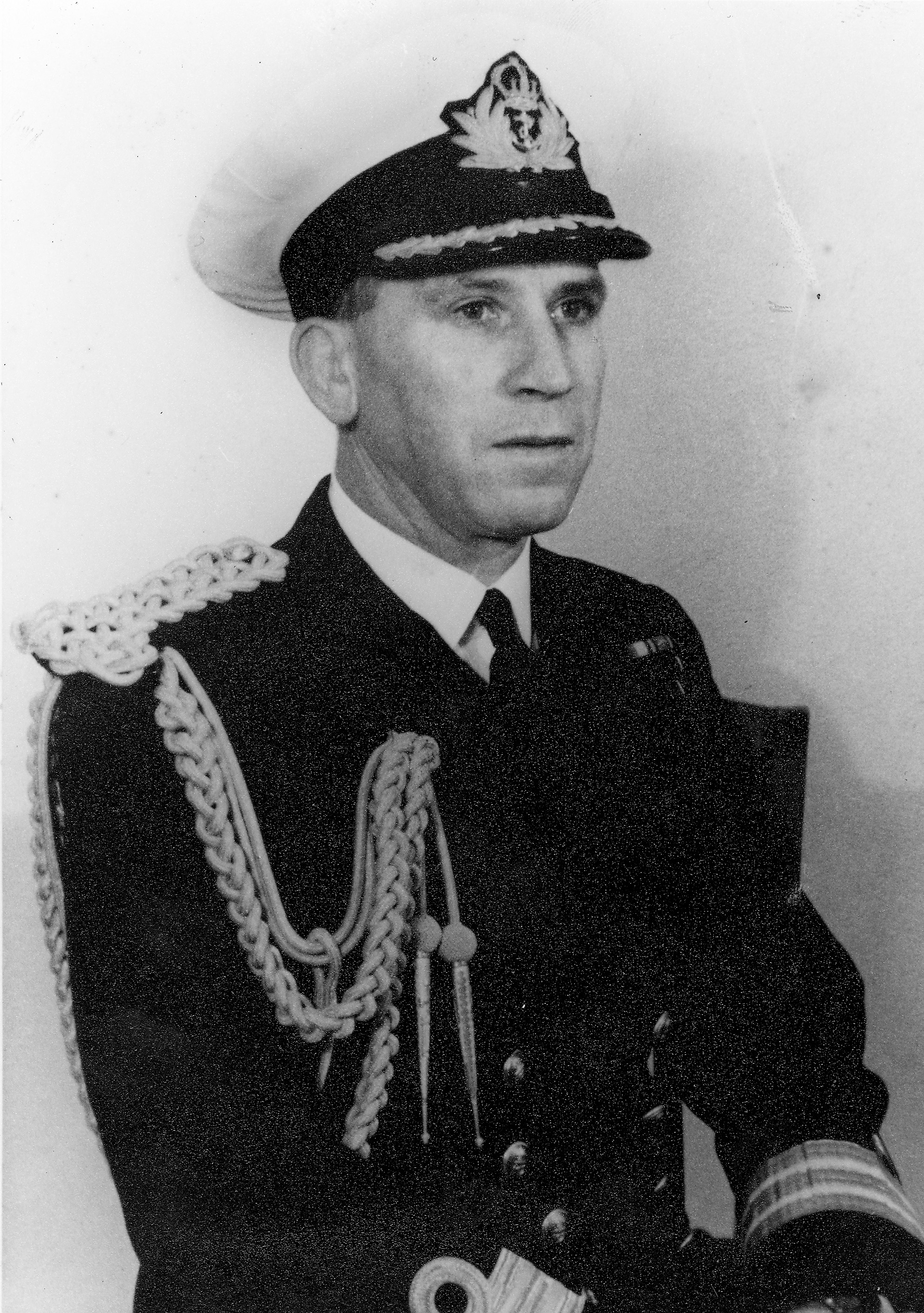

Display No. 3A
SKYRME, Owen Rowland James
Owen Skyrme joined the New Zealand Division of the Royal Navy in 1934 as a Probationary Writer. He completed his training in HMS Philomel. Skyrme’s first posting was to HMS Diomede which he served on for almost two years. In 1935 Skyrme was part of the crew of HMS Diomede that took the ship back to Britain to be paid off into the reserve. En-route the Abyssinian Crisis broke out and HMS Diomede was diverted to Aden for possible actions against Italian forces. Skyrme was part of the crew transferred from Diomede to HMS Achilles in Britain to bring her out to New Zealand in 1936. In the lead up to the Second World War, Skyrme served in HM Ships Dunedin and Achilles, as well as in the shore establishment HMS Philomel.
At the outbreak of the Second World War, Skyrme was serving in HMS Leander. In May 1940 Skyrme rejoined Achilles, which was operating in the Pacific. In August 1940 he was posted to Philomel and remained there until January 1944 having reached the rank of Paymaster Lieutenant. Skyrme served in HMNZS Gambia during operations in the Indian Ocean, Northern Pacific and off Japan. Skyrme received a Mentioned in Despatches (MiD) for his services in Gambia.
After the war, Skyrme returned to New Zealand and remained in Philomel until 1949. In 1947 Skyrme changed his branch to Supply and was promoted to Lieutenant Commander. He spent time in HMNZS Bellona before taking a two year posting in HMNZS Maori, the Royal New Zealand Navy Office in London. In 1952 Skyrme returned to Philomel for the next two years. Over the next four years, Skyrme was deployed in HMNZ Ships Black Prince, Bellona, Royalist and Wakefield. In July 1957 Skyrme returned to the United Kingdom for another exchange to the Royal Navy in HMNZS Maori. He spent a further two years serving in HMS President in London. Skyrme returned to New Zealand in 1960 and served in Philomel until his retirement at the end of 1962. For his services he was created an Officer of the Most Excellent Order of the British Empire (OBE) and served for a time as an Aide de Camp to the Governor General of New Zealand.
Awarded medal(s)
Medal Description [Left to Right]:
Officer of the Most Excellent Order of the British Empire (OBE)
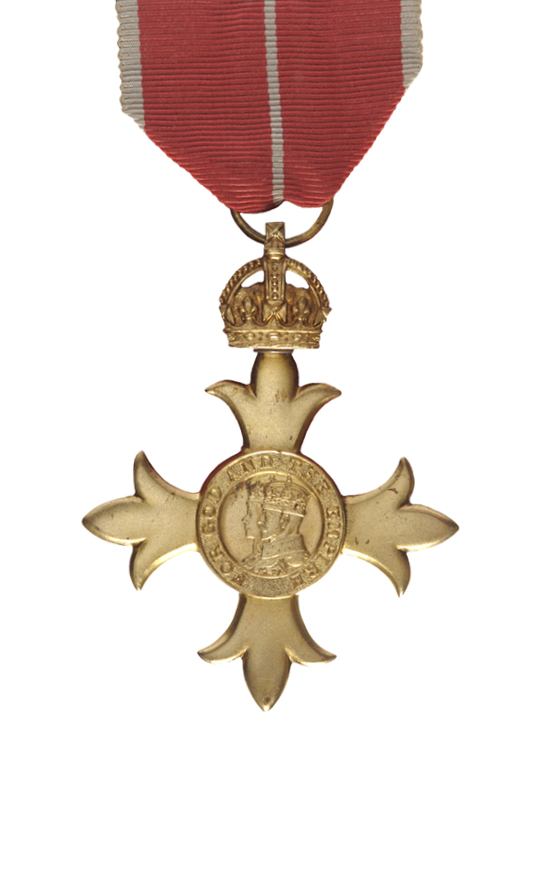
Established by King George V in 1917 for services to the British Empire. The Order has five classes: Knight and Dame Grand Cross (GBE), Knight Commander and Dame Commander (KBE / DBE), Commander (CBE), Officer (OBE) and Member (MBE). The OBE badge is in silver-gilt. In December 1918, the Order was split into two divisions: a Civil Division for civilian recipients; and a Military Division for awards to commissioned officers and warrant officers for distinguished service in action. The insignia of the Civil and Military Divisions is distinguished only by the ribbon, the military award having a narrow central stripe. Prior to the introduction of the New Zealand Order of Merit in 1996, the Order of the British Empire was the most common honour awarded to New Zealand military personnel.
The 1939-1945 Star
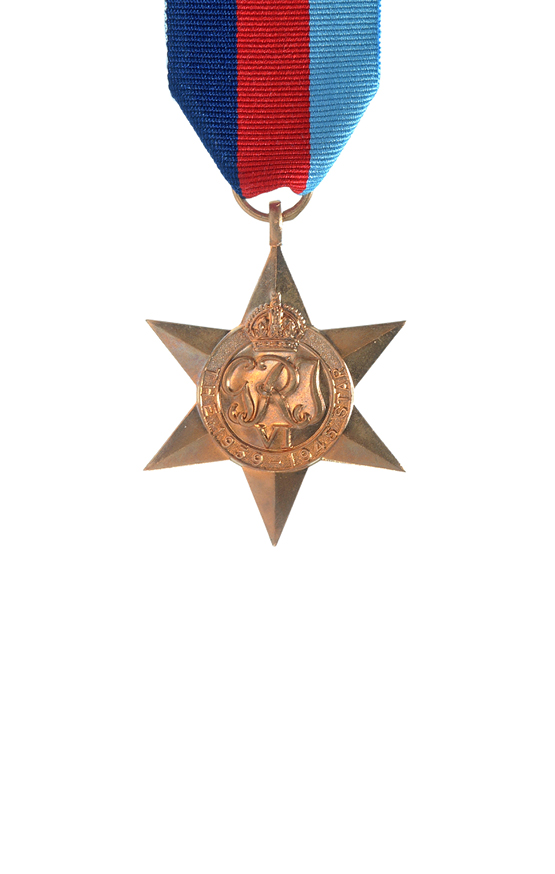
The 1939-45 Star is the first in a series of eight campaign stars instituted in 1945 to recognise service in World War Two. The ribbon has three equal vertical stripes of dark blue, red and light blue. The dark blue stripe symbolises the service of the Navy and the Merchant Navy, the red stripe symbolises the service of the Army, and the light blue stripe symbolises the service of the Air Force. The equal width bands represent the equal contributions of the three service arms towards victory. The ribbon was devised by King George VI. Two clasps could be awarded with this medal: ‘Battle of Britain’ and ‘Bomber Command’. Only aircrew would qualify for these clasps although a small number of Fleet Air Arm naval pilots flew for the air force and would be eligible for the ‘Battle of Britain’ clasp.
The Burma Star
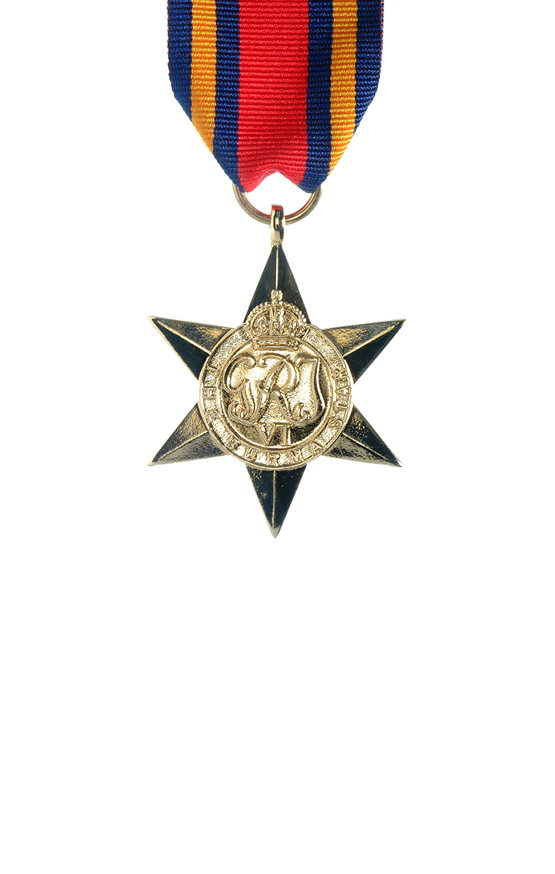
The Burma Star was awarded for service in the Second World War in the Burma campaign, from 11 December 1941 to 2 September 1945. The centre of the ribbon is red (representing the Commonwealth forces) with outer stripes of dark blue (representing the British forces). The dark blue bands each have at their centres a stripe of bright orange (symbolising the sun). A ‘Pacific’ clasp could be awarded with this medal. Personnel qualifying for both the Pacific and Burma Stars were awarded the first star but only a clasp in respect of the second.
The War Medal 1939-1945
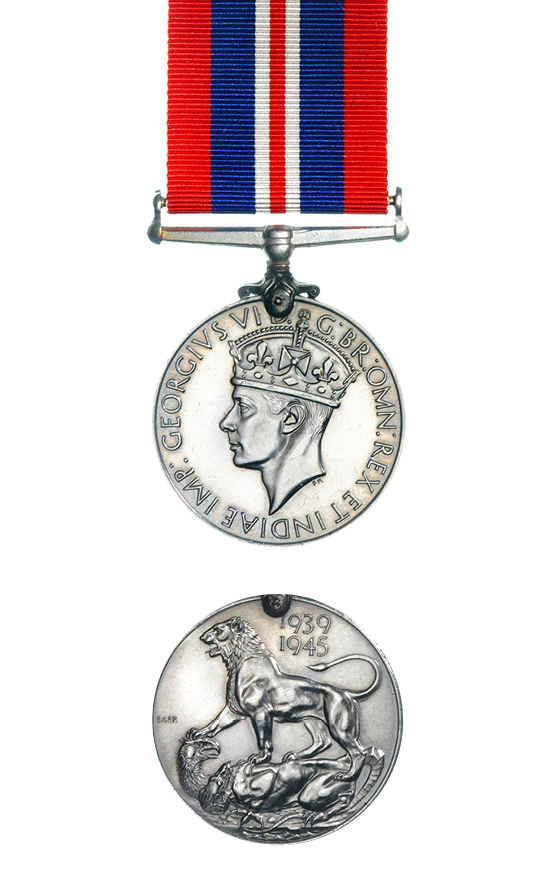
The War Medal 1939-45 was awarded across the British Commonwealth to all full-time members of the Armed Forces in the Second World War for 28 days service between 3 September 1939 and 2 September 1945, irrespective of where they were serving. The ribbon is the red, white, and blue of the (British) Union Flag. There is a narrow central red stripe with a narrow white stripe on either side. There are broad red stripes at either edge, the two intervening stripes being blue.
A bronze oak leaf on the medal ribbon denotes that the recipient was Mentioned in Despatches. To be Mentioned in Despatches a member of the armed forces had their name mentioned in an official report, written by a superior officer, and sent to a higher command. The report would describe the individual’s gallant or meritorious action in the face of the enemy.
The New Zealand War Service Medal
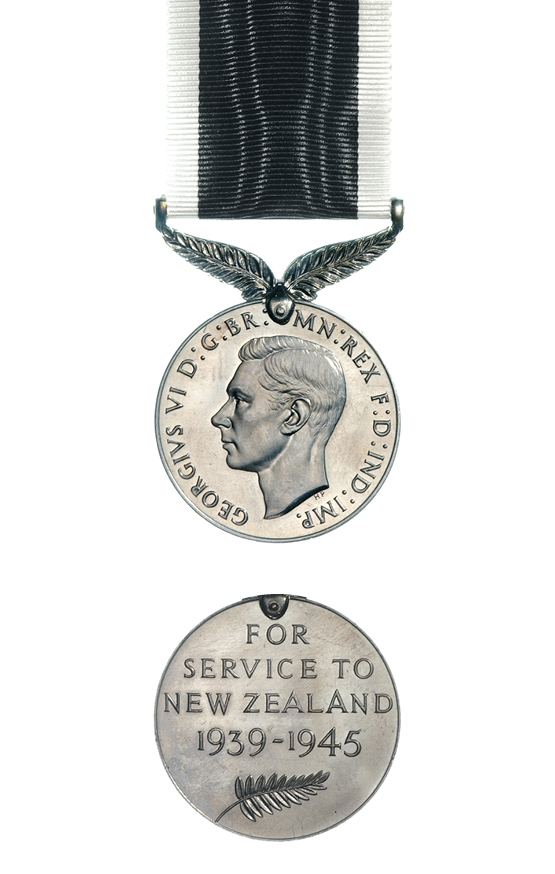
The New Zealand War Service Medal was awarded for 28 days’ full time service or six months’ part time service in the Second World War in any of the New Zealand Armed Forces including the Reserves, Naval Auxiliary Patrol Service, or Home Guard, between 3 September 1939 and 2 September 1945.
Coronation Medal 1953

This medal was issued to celebrate the coronation of Queen Elizabeth II in 1953. It was awarded to citizens of the British Commonwealth both military and civilian. Only 37 medals were issued with the names of the recipients engraved on them. These were awarded to the members of the British expedition which had reached the summit of Mount Everest on the morning of the Coronation ceremony. New Zealander, Sir Edmund Hillary, one of the two climbers who conquered the mountain, was knighted and received the Coronation Medal from the new Queen at Buckingham Palace several weeks later.

